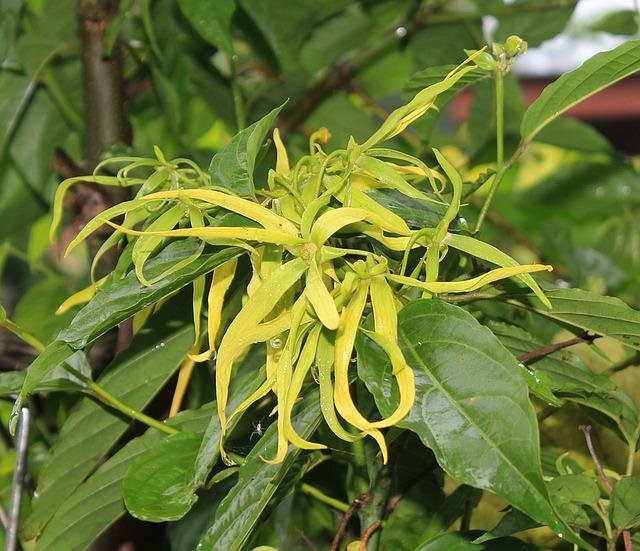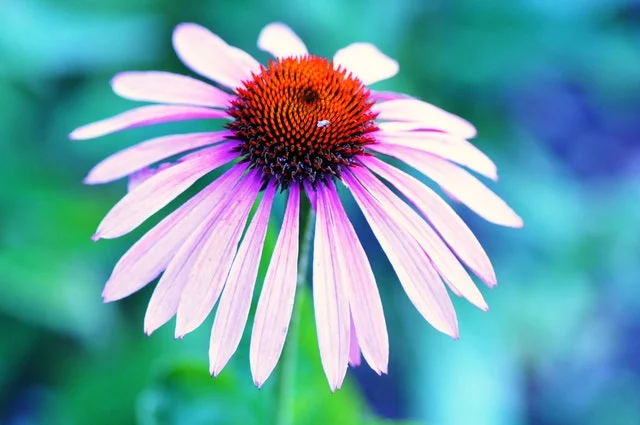
Cananga odorata essential oil: cultivation, properties, where to find it and all uses of the essential oil Ylang-Ylang, extracted from the Cananga tree.
Cananga odorata, better known as the cananga tree or ylang ylang tree, is a tropical plant native to the Philippines. Cananga odorata is very appreciated for the scent of its flowers whose essence is known throughout the world as ylang-ylang, the same name is used improperly to identify the same plant.
The famous ylang ylang essential oil is extracted from Cananga odorata and is widely used in various industrial sectors. Of the Cananga odorata species there are different varieties, the Artabotrys odoratissimus and the Iartabotrys hexapetalus; both are woody and ever-growing climbing plants but the essential oil of Cananaga odorata is extracted from Artabotrys odoratissimus .
The name ylang-ylang derives from the word ilang which means desert, alluding to the natural habitat of Cananga odorata . Another current of thought states that the name ylang-ylang derives from the word ilang-ilan which means “ rare”, referring to the flower’s exceptionally delicate scent.
Cananga odorata is a fast-growing tree of the Annonaceae family. Its growth is such that this plant can increase 5 meters per year in height up to an average length of 15 meters. The leaves are evergreen, appear smooth, shiny and oval. The leaves are pointed, have a wavy margin and are 13 to 20 cm long. Cananga odorata essential oil is extracted from flowers. The flowers are drooping, consisting of six narrow, green-yellow petals (more rarely, the flowers are pink). The shape of the ylang-ylang flower vaguely resembles that of a starfish.
The cultivation of cananga odorata
There are several varieties of cananga odorata and some are well suited to cultivation in southern Italy. The Fruticosa variety of Cananga odorata, better known as dwarf ylang-ylang, is a compact growing sapling that delights gardens and porches with highly fragrant flowers.
Recall that cananga odorata is native to the Philippines and Indonesia. It is commonly grown in Polynesia, Malaysia and Micronesia. It grows well in full sun or with a partially sunny exposure. It prefers acid soils as well as in its natural habitat (rainforest).
Those who intend to grow cananga odorata in the North will have to set up a protection in the coldest period of the year. Cananga trees resist winter but only in areas of southern Italy where the Mediterranean climate guarantees particularly mild winters. Although the cananga odorata tree is fast growing, it fails to flower for 2-3 years.
The ylang ylang essential oil is extracted by steam distillation from manually harvested flowers.
Cananga odorata essential oil – The properties
The chemical profile of this essential oil includes compounds such as linalool, caryophyllene, methyl benzoate, sesquiterpenes, germacrene… The essential oil of cananga odorata is popular for its aphrodisiac properties and for its aromatic power. It is widely used in perfumery, just mentioning the famous Chanel n.5 to give an idea of the popularity of ylang ylang essential oil.
Cananga odorata essential oil – the uses
Ylang Ylang essential oil is used in aromatherapy for its calming, hypotensive and aphrodisiac properties. In natural cosmetics and for skin and body care, it is used for its astringent and tonic properties.
Among the most common uses we see it spread in warm and lukewarm environments to alleviate psyche disorders such as anxiety, nervousness, irritability and insomnia. It is used to appease anger and to counter resentment and frustration. According to experts, ylang ylang essential oil exerts a hypotensive action so as to mitigate tachycardia and many disorders of the cardio-circulatory system.
Its astringent and toning properties are interesting for the care of skin and hair. It is indicated for the treatment of acne and to strengthen the hair. It is useful for protecting and nourishing hair, subject to salt, wind and sun.
Where to buy ylang ylang essential oil?
Ylang ylang essential oil can be purchased at natural product shops or through online purchases. If you are considering making a homemade perfume, know that ylang ylang essential oil combines well with rosewood, jasmine, rose and bergamot.






